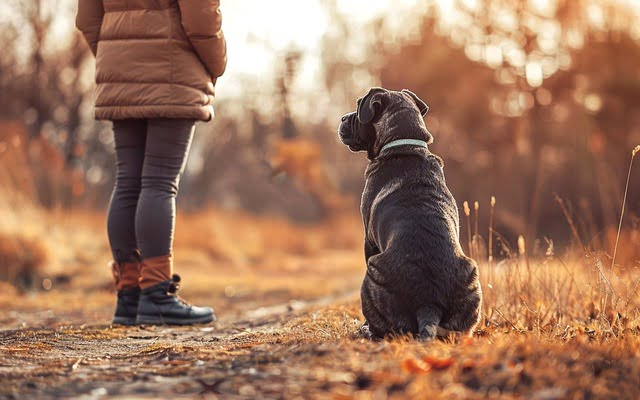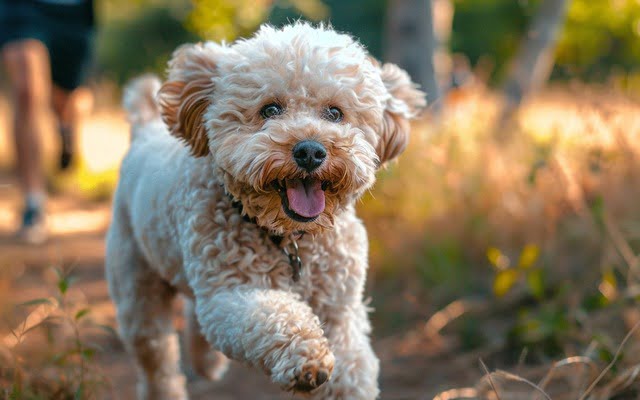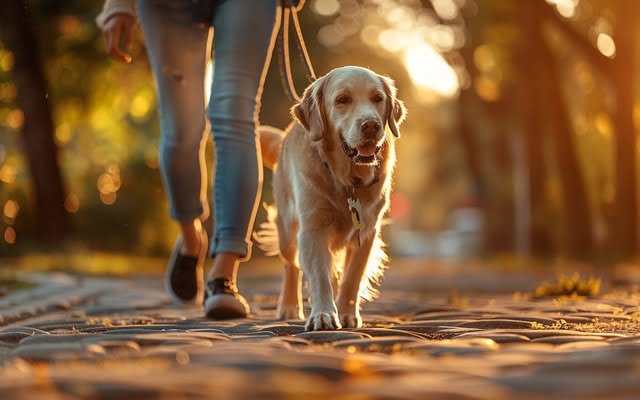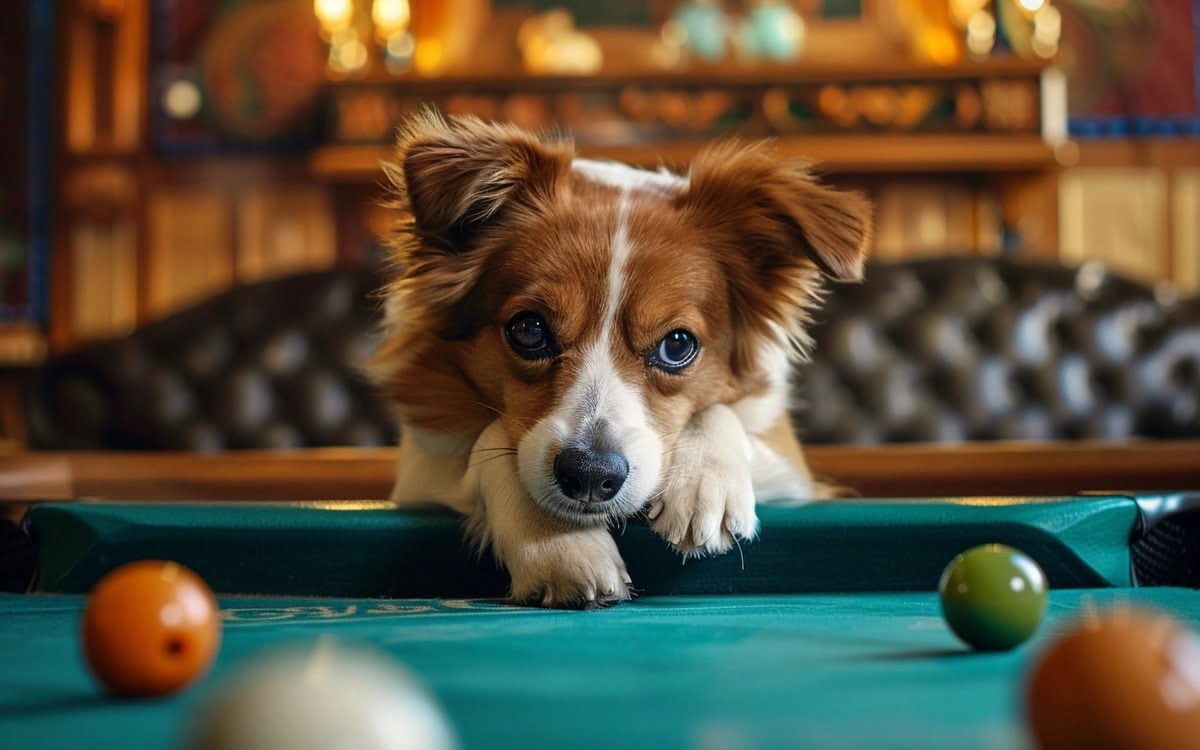Let’s be real – dog training can sometimes feel like trying to teach calculus to a goldfish. But trust me, nailing these classic cues will change everything. Picture this: your pup sits patiently while you chat with your neighbor, instead of performing an embarrassing leash-tango. They come racing back when you call, even with squirrels taunting them in the distance. And they calmly “leave it” when they spot that questionable sidewalk snack. Sounds like a dream, right? So join me to learn about Classic dog cues right away.
What Are These Magical “Classic dog cues” Anyway?
Before we dive into the nitty-gritty, let’s get on the same page about what these “classic cues” actually are. They’re the six essential commands that every dog should have in their vocabulary:
- Sit
- Down
- Stay
- Come
- Heel
- Leave it
These cues are the foundation of good doggy manners, setting the stage for a lifetime of happy cohabitation.
Now, let’s talk about how we’re going to achieve these training triumphs. Forget those old-school “alpha dog” tactics – we’re all about positive reinforcement here. Why? Because it works! It’s like giving your dog a high-five every time they do something awesome.
Think of it this way: Your pup’s brain is wired to repeat behaviors that result in good things. So, by rewarding them with treats, praise, or a happy dance when they nail a cue, you’re essentially telling their brain, “Yes! Do that again!” It’s a win-win for everyone involved.
Mastering the Classic Cues: A Step-by-Step Guide
Alright, dog enthusiasts, it’s time to roll up our sleeves and get to the fun part – teaching your furry friend those all-important classic cues. Remember, patience and consistency are key, so don’t worry if your pup doesn’t become a canine Einstein overnight. With a little practice and a whole lot of love, you’ll be amazed at how quickly they catch on.
Sit
If there’s one cue that’s a must-have in every dog’s repertoire, it’s “sit.” It’s the canine equivalent of saying “please” – a simple gesture that can make all the difference in everyday interactions. Imagine your dog sitting calmly while you greet guests at the door, waiting patiently for their dinner, or even just hanging out with you at the park. “Sit” is a versatile cue that comes in handy in countless situations.
How to Teach “Sit”: The Luring Technique
Arm Yourself with Treats: Grab a handful of your pup’s favorite bite-sized treats. These will be your secret weapon for luring them into the perfect “sit.”
- Get Your Dog’s Attention: Hold a treat close to your dog’s nose, making sure they’re focused on you and not on a rogue squirrel or a passing mailman.
- The Upward Lure: Slowly move the treat upwards and slightly back over your dog’s head. Their natural instinct will be to follow the treat with their nose, causing their rear end to lower into a sitting position.
- Mark and Reward: As soon as your dog’s bum hits the ground, say “yes!” or use a clicker to mark the behavior. Then, immediately give them the treat and shower them with praise.
- Repeat and Reinforce: Practice this several times in short, fun sessions throughout the day. Gradually, start saying the word “sit” just before you lure them into position. With enough repetition, your dog will associate the word “sit” with the action of sitting.
Tip: The “Luring” Technique: While luring is a great way to introduce the “sit” cue, it’s important to eventually fade it out. Start by reducing the size of the treat or using less obvious hand movements. Eventually, your dog should learn to sit on command without the need for a lure.
Down

Imagine your pup sprawled out on a fluffy rug, completely relaxed and content. That’s the magic of the “down” cue! Not only does it make for adorable Instagram photos, but it’s also a powerful tool for calming your dog in stressful situations. Whether it’s a trip to the vet, a loud thunderstorm, or a rambunctious playdate, “down” can help your dog find their zen.
How to Teach “Down”: From Sit to Snooze
- Start with “Sit”: Begin with your dog in a sitting. Hold a treat in your hand and slowly lower it towards the ground between their front paws.
- Lure into Down: As your dog follows the treat with their nose, their body will naturally lower into a “down” position. Once their belly touches the floor, say “yes!” or click your clicker and give them the treat.
- Add the Cue: After a few successful repetitions, start saying the word “down” just as your dog begins to lower themselves. Over time, they’ll learn to associate the word “down” with the action of lying down.
- Fade the Lure: Gradually decrease the use of the lure by using smaller treats or subtler hand motions. Eventually, your dog should respond to the verbal cue alone.
Tip: The “Capture” Method
Sometimes, the best way to teach a cue is to simply observe your dog’s natural behavior. If you notice your pup lying down on their own, take advantage of the moment! Say “yes!” or click your clicker as soon as their belly hits the floor and reward them with a treat. This “capture” method reinforces the behavior you want and teaches your dog that lying down is a good thing.
Troubleshooting “Down” Challenges
- Dog Won’t Stay Down: If your dog pops back up too quickly, try rewarding them for staying down for longer periods. Gradually increase the duration of the “down” as they get the hang of it.
- Dog Only Downs with a Lure: If your dog seems dependent on the treat lure, start using subtler hand motions and smaller treats. You can also try using a different type of reward, like praise or a favorite toy.
Stay

If you’ve ever dreamed of having a dog who can patiently wait their turn at the dog park water fountain or calmly hold their ground while you answer the door, then “stay” is your golden ticket. This cue is all about building impulse control and teaching your dog to resist distractions, even when their every instinct is screaming, “Squirrel!”
How to Teach “Stay”: Building Patience, One Paw at a Time
- Start with “Sit”: Ask your dog to sit and offer your open palm facing them as a visual signal for “stay.”
- Take a Tiny Step Back: Take a small step back while keeping your hand up and saying, “Stay.” If your dog remains sitting, praise them and give them a treat.
- Gradually Increase Distance: Slowly increase the distance of your steps back, rewarding your dog each time they successfully hold their stay.
- Add Duration: Once your dog can stay reliably for a few steps, start gradually increasing the duration of the stay. Begin with a few seconds and gradually work your way up to longer periods.
- Introduce Distractions: Once your dog is a “stay” pro in a quiet environment, start introducing distractions like toys, other people, or tempting smells. Remember to start with mild distractions and gradually increase the difficulty as your dog’s focus improves.
Troubleshooting “Stay” Challenges
- Creeping: If your dog starts creeping forward during the “stay,” calmly return them to the original spot and start again. Be consistent and don’t reward them for creeping.
- Breaking the Stay: If your dog breaks the stay, don’t get discouraged. Simply reset and try again with a shorter duration or fewer distractions.
Variations on the “Stay” Theme
The basic “stay” cue is just the beginning! Once your dog has mastered it, you can get creative and teach them fun variations like:
- Stay with a Stand: Instead of sitting, ask your dog to stand and remain in place until released. This is a great way to work on balance and focus.
- Stay with a Down: This is a more relaxed version of the stay where your dog lies down and remains in that position until you give them the cue to move.
- Distance Stay: Challenge your dog by gradually increasing the distance between you and them during the stay.
Tip: Use a Release Cue: Always use a release cue, such as “okay” or “release,” to let your dog know when it’s okay to break the stay. This helps them understand the difference between a “stay” and a “free for all.”
Come

Let’s be honest – there’s no feeling quite like seeing your furry friend come barreling towards you with unbridled joy when you call their name. It’s the ultimate display of trust and affection. But a reliable “come” cue isn’t just about warm fuzzies; it’s also crucial for safety. Whether you’re at the dog park, hiking in the woods, or simply enjoying a stroll around the neighborhood, you need to know that your pup will come when called, no matter what distractions are vying for their attention.
How to Teach “Come”: The Recall That Saves the Day
- Start in a Calm Environment: Begin your training indoors or in a fenced yard where there are minimal distractions.
- Get Their Attention: Say your dog’s name in an upbeat, enthusiastic tone. When they look at you, say “come!” and encourage them to run towards you.
- Reward Extravaganza: As soon as they reach you, shower them with praise, treats, and affection. Make it a party!
- Gradually Increase Distance: Once your dog is consistently coming to you from short distances, start increasing the distance between you. Use a long line for safety, especially in outdoor environments.
- Add Distractions: Start incorporating distractions into your training sessions, like toys, other people, or tempting smells. Remember to start with mild distractions and gradually increase the difficulty as your dog’s recall improves.
Tip: The Emergency Recall
It’s also a good idea to create a separate “emergency recall” cue that you only use in critical situations. This could be a whistle, a specific word, or a unique sound that your dog associates with an urgent need to return to you immediately. Practice this emergency recall regularly in safe environments so that your dog knows to respond even in the face of extreme distractions.
Troubleshooting “Come” Challenges
- Dog Only Comes Sometimes: If your dog seems selective about when they come, it’s likely because they’ve learned that coming to you doesn’t always result in something positive. Make sure you’re rewarding them consistently for coming when called, even if it means interrupting a fun game or activity.
- Dog Hesitates or Refuses to Come: If your dog hesitates or refuses to come, it’s important to avoid punishment. Instead, calmly go to them, attach their leash, and gently lead them back to you. Once they’re back by your side, reward them with praise and a treat.
Variations on the “Come” Cue
Once your dog has mastered the basic “come,” you can add some flair by teaching them variations like:
- Come with a Sit: Teach your dog to come to you and immediately sit in front of you. This is a great way to add some formality to their recall.
- Come with a Touch: Train your dog to come to you and touch your hand with their nose. This can be helpful for directing their attention or getting them to focus on you.
Remember, the key to a rock-solid “come” is to make it a fun and rewarding experience for your dog. The more they associate coming to you with positive things, the more eager they’ll be to do it. So, let’s get out there and start practicing!
Heel

Ah, the dreaded leash-pulling – the bane of many dog walks. It’s enough to make even the most patient dog owner want to tear their hair out. But fear not, fellow leash-holders! The “heel” cue is here to save your sanity (and your shoulders). When mastered, “heel” transforms your walks from frustrating tug-of-war matches into peaceful strolls where your dog walks politely by your side.
How to Teach “Heel”: The Art of the Loose Leash
- Pick Your Side: Decide which side you want your dog to heel on (most people choose the left).
- Lure and Reward: Hold a treat at your side, close to your leg, and start walking. As your dog stays by your side to get the treat, say “heel” in a happy voice.
- Consistent Rewards: Continue rewarding your dog every few steps for staying in the heel position.
- Gradually Increase Distance: Once your dog is consistently heeling for short distances, start gradually increasing the length of your walks.
- Add Distractions: Introduce distractions like other dogs, squirrels, or interesting smells to test your dog’s focus. Remember to reward them for staying focused and in the heel position.
Troubleshooting Heel Challenges
- Pulling Ahead: If your dog pulls ahead, simply stop walking. Wait for them to come back to your side and then start walking again. Be patient and consistent – eventually, they’ll learn that pulling gets them nowhere.
- Lagging Behind: If your dog lags behind, use an upbeat tone and encourage them to catch up. You can also try using a shorter leash to keep them closer to you.
Tip: Leash Handling Techniques
The way you hold your leash can make a big difference in your dog’s ability to heel successfully. Avoid holding the leash too tightly, as this can encourage pulling. Instead, keep a relaxed grip and allow a little slack in the leash. Use gentle tugs or changes in direction to guide your dog back into the heel position if they start to wander.
Leave It

We’ve all been there – you’re out on a walk with your pup when they suddenly lunge for a discarded chicken nugget (or worse!). Enter the “leave it” cue – a lifesaver for preventing unwanted scavenging and protecting your dog from potentially harmful substances. But “leave it” is more than just a safety precaution; it’s a valuable tool for teaching your dog impulse control and good decision-making.
How to Teach “Leave It”: The Art of Self-Control
- Closed Hand, Tempting Treat: Hold a treat in your closed fist and present it to your dog. They’ll likely sniff, lick, and paw at your hand, trying to get the treat.
- Wait for Calmness: As soon as your dog backs away or stops trying to get the treat, say “yes!” or click your clicker and give them a treat from your other hand.
- Open Hand, Different Treat: Once your dog is consistently backing away from your closed fist, try opening your hand and revealing the treat. If they try to take it, quickly close your hand again. Reward them when they wait patiently.
- Add the Cue: Start saying “leave it” as you present the treat in your open hand. Reward them when they refrain from taking it.
- Increase Difficulty: Gradually increase the difficulty by using more tempting treats or placing treats on the ground. Remember to reward them for successful “leave its.”
Tip: The “It’s Your Choice” Game
This fun game reinforces the “leave it” concept while giving your dog a sense of agency. Hold a treat in each hand, one open and one closed. Let your dog choose which hand to approach. If they choose the closed hand, say “oops!” and close it tighter. If they choose the open hand, say “yes!” and let them have the treat. This teaches them that waiting and making the right choice leads to a reward.
Conclusion
Congratulations! You’re well on your way to becoming a classic cue connoisseur, and your furry friend is probably bursting with pride (and maybe a little drool). Remember, training your dog isn’t just about teaching them to sit, stay, or come – it’s about strengthening your bond and building a language of love and understanding.
FAQs
What’s the difference between “leave it” and “drop it,” and when should I use each cue?
“Leave it” and “drop it” are both valuable cues, but they have distinct purposes:
- Leave It: This cue is used before your dog has grabbed something you don’t want them to have. It teaches them to resist temptation and ignore the object.
- Drop It: This cue is used after your dog has already picked up an object. It teaches them to release it from their mouth.
Think of “leave it” as a preventive measure and “drop it” as a way to get your dog to let go of something they shouldn’t have.
My dog gets easily distracted during training sessions. How can I improve their focus?
Distractions are a common challenge in dog training, but there are several strategies you can try:
- Choose a Quiet Location: Start training in a calm, quiet environment with minimal distractions. As your dog gets better at focusing, you can gradually increase the level of distractions.
- Keep Sessions Short and Sweet: Short, frequent training sessions are more effective than long, drawn-out ones. Aim for 5-10 minute sessions several times a day.
- Use High-Value Rewards: Break out the extra-special treats or toys that your dog goes crazy for. This will help them stay focused on you and the task at hand.
Are there any classic cues that are particularly important for dogs with high energy or reactivity?
Yes, certain classic cues are especially beneficial for dogs with high energy or reactivity:
- “Stay“: This cue helps dogs learn to control their impulses and remain calm in exciting situations.
- “Leave It“: This cue can prevent reactive dogs from barking or lunging at triggers.
- “Heel“: This cue can help you manage a high-energy dog on walks and prevent them from pulling on the leash.

My job is to make sure every fact is right and every article is a joy to read. I’m kind of like a dog trainer for information – I make it behave!

